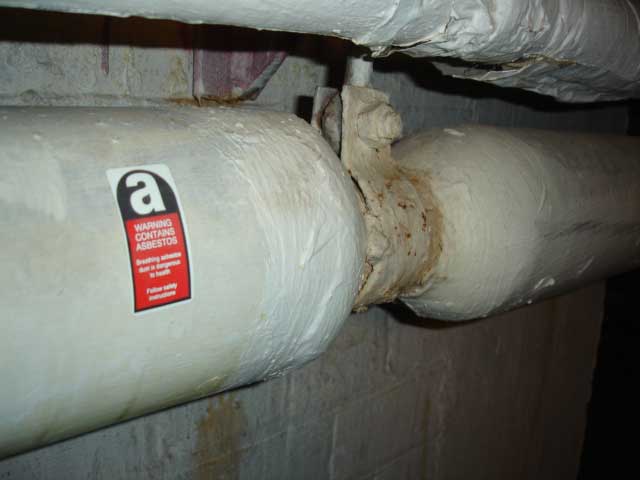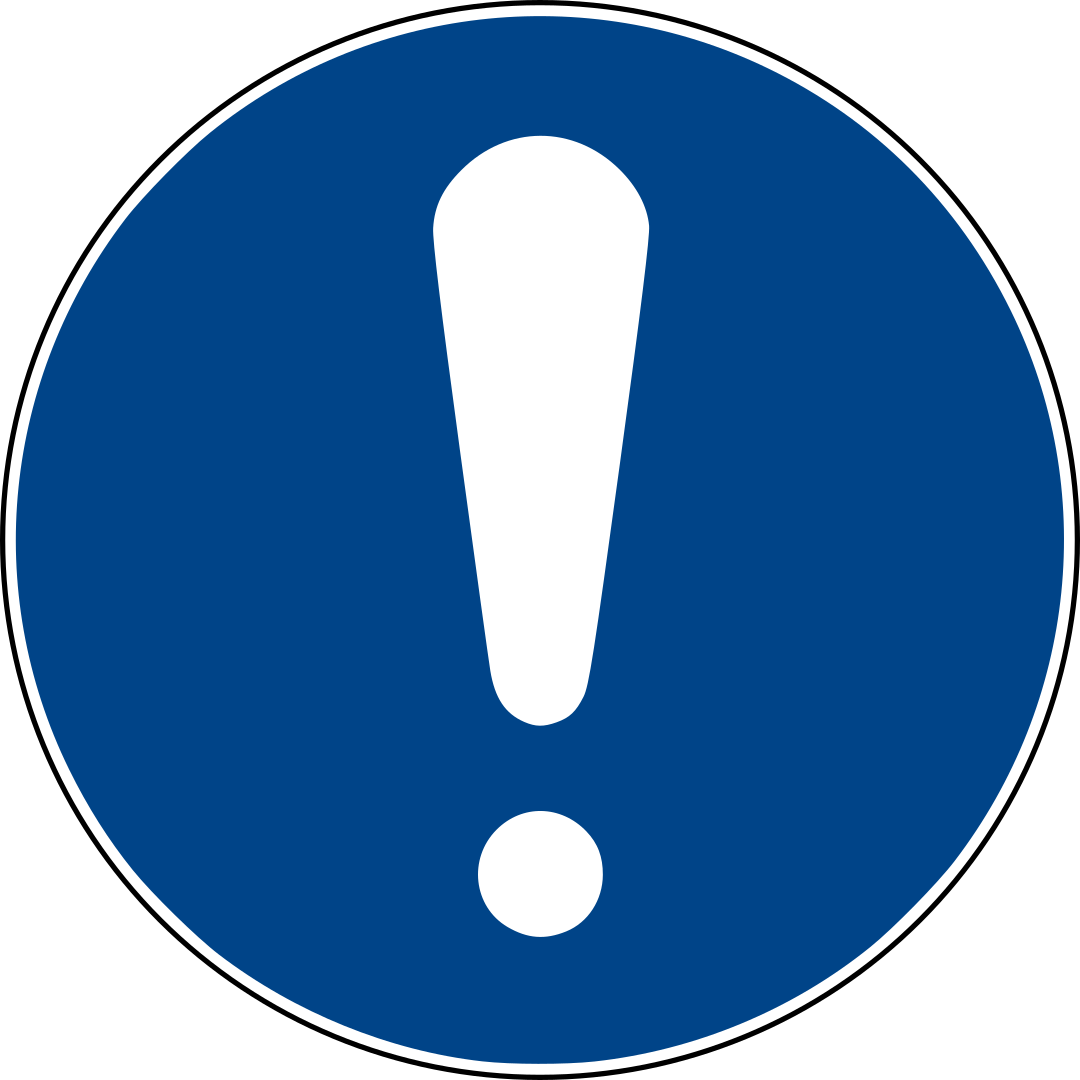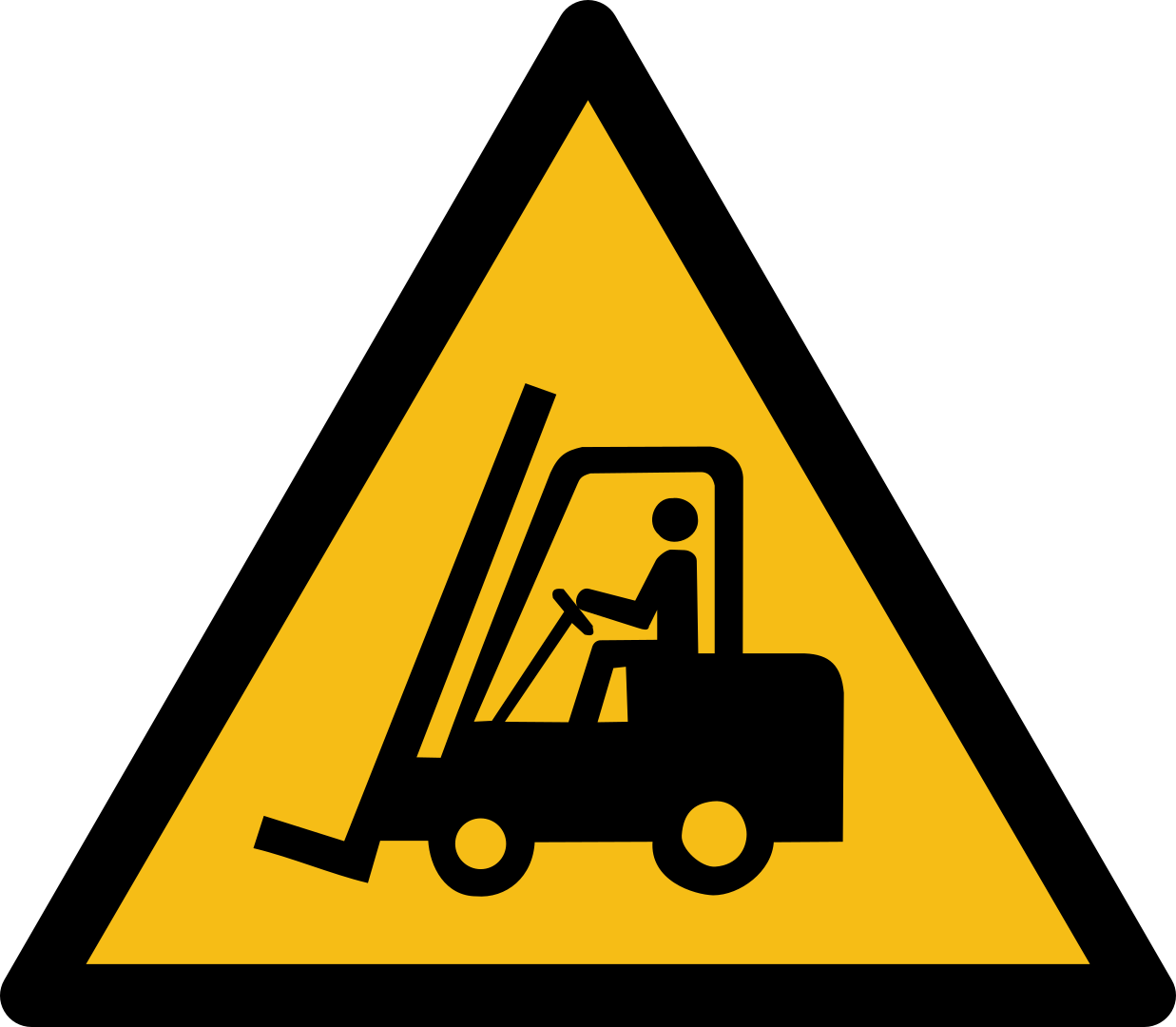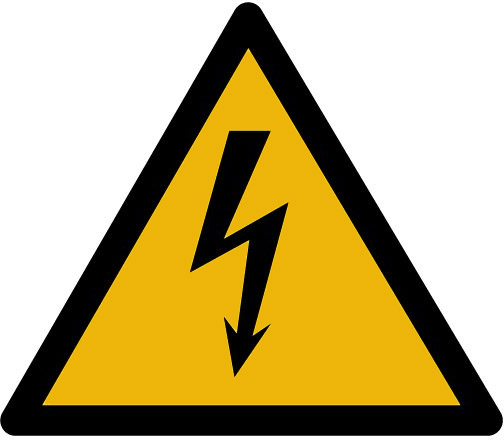You have 45 minutes to answer 50 multiple choice CSCS Health, Safety and Evironment Test questions for Operatives and Specialists. You need to answer at least 45 out of 50 questions correctly to pass. Answers may be reviewed after each question or at the end of the test. Good luck!
List of questions in above test (quick view). Click question box to reveal correct answer.
1. Employers and contractors will always carry some degree of liability if an employee is prosecuted by a Health and Safety Executive inspector. True or false?
Give ONE answer
AB
Correct Answer: A
Explanation: If adequate training has been provided by the employer, the employee can be held entirely liable for failing to comply with health and safety standards.
Explanation: If adequate training has been provided by the employer, the employee can be held entirely liable for failing to comply with health and safety standards.
2. Who should be questioned in an investigation?
Give ONE answer
AB
C
D
Correct Answer: B
Explanation: All relevant parties should be consulted in an investigation.
Explanation: All relevant parties should be consulted in an investigation.
3. How often should you do a face-fit test for your respiratory protective equipment?
Give ONE answer
AB
C
D
Correct Answer: A
Explanation: It is good practice to regularly check the fit of your RPE with a face-fit test.
Explanation: It is good practice to regularly check the fit of your RPE with a face-fit test.
4. What may happen if you inhale a respiratory sensitiser?
Give ONE answer
AB
C
D
Correct Answer: D
Explanation: Respiratory sensitisers may cause you to develop an allergic reaction.
Explanation: Respiratory sensitisers may cause you to develop an allergic reaction.
5. What hazard is posed by so-called 'nuisance dust'?
Give ONE answer
AB
C
D
Correct Answer: D
Explanation: Nuisance dust is not toxic, but can become an irritant if too much is inhaled.
Explanation: Nuisance dust is not toxic, but can become an irritant if too much is inhaled.
6. What is the MAIN risk associated with organic matter that has begun to rot?
Give ONE answer
AB
C
D
Correct Answer: D
Explanation: Organic matter produces hydrogen sulphide when it begins to rot. This can be dangerous if it is allowed to build up.
Explanation: Organic matter produces hydrogen sulphide when it begins to rot. This can be dangerous if it is allowed to build up.
7. You are about to begin work in an enclosed and dusty room. How should you proceed?
Give ONE answer
AB
C
D
Correct Answer: A
Explanation: Always assume that dust in any enclosed area could be harmful.
Explanation: Always assume that dust in any enclosed area could be harmful.
8. Why is it important to capture dust created by cutting tools BEFORE it gets into the air?
Give ONE answer
AB
C
D
Correct Answer: A
Explanation: The main reason for collecting dust before it gets into the air is to protect workers from inhaling it.
Explanation: The main reason for collecting dust before it gets into the air is to protect workers from inhaling it.
9. What dangerous problem MAY develop if you use power tools regularly?
Give ONE answer
AB
C
D
Correct Answer: D
Explanation: Regular, frequent use of power tools can lead to complacency. This is when many accidents occur.
Explanation: Regular, frequent use of power tools can lead to complacency. This is when many accidents occur.
10. 5 litres of oil can contaminate an area of what size?
Give ONE answer
AB
C
D
Correct Answer: C
Explanation: Just 5 litres of oil spread extensively through the soil, surface water, and groundwater, affecting an area the size of two football pitches.
Explanation: Just 5 litres of oil spread extensively through the soil, surface water, and groundwater, affecting an area the size of two football pitches.
11. Who should refuel a site vehicle?
Give ONE answer
AB
C
D
Correct Answer: B
Explanation: You must be authorised to carry out vehicle refuelling.
Explanation: You must be authorised to carry out vehicle refuelling.
12. You have leftover liquid from a task that is marked as environmentally harmful. What should you do FIRST?
Give ONE answer
AB
C
D
Correct Answer: A
Explanation: Always check if spare hazardous liquid can be used elsewhere on site. This will reduce the amount of harmful waste produced.
Explanation: Always check if spare hazardous liquid can be used elsewhere on site. This will reduce the amount of harmful waste produced.
13. AS LITTLE AS how much soil is enough to prove fatal to a body trapped underneath?
Give ONE answer
AB
C
Correct Answer: A
Explanation: 1 cubic metre of soil can weigh 1 tonne - enough to crush a human body.
Explanation: 1 cubic metre of soil can weigh 1 tonne - enough to crush a human body.
14. Which of the following is NOT recommended as part of a safe system of work in excavations?
Give ONE answer
AB
C
D
Correct Answer: B
Explanation: Gas and fume levels in an excavation should always be mitigated or monitored.
Explanation: Gas and fume levels in an excavation should always be mitigated or monitored.
15. When excavating, you come across a yellow service. What service is this likely to be?
Give ONE answer
AB
C
D
Correct Answer: C
Explanation: Gas services are usually yellow - but this is not always the case.
Explanation: Gas services are usually yellow - but this is not always the case.
16. What are TWO ways dangerous levels of carbon dioxide may be created?
Give TWO answers
AB
C
D
E
Correct Answer: A, D
Explanation: Carbon dioxide is exhaled by humans when breathing, and is also produced by chalky ground - especially if it is exposed to acidic rainfall.
Explanation: Carbon dioxide is exhaled by humans when breathing, and is also produced by chalky ground - especially if it is exposed to acidic rainfall.
17. Is this ladder positioned at a safe angle?
Give ONE answer

B
Correct Answer: A
Explanation: This ladder is not safely positioned - it is too steep.
Explanation: This ladder is not safely positioned - it is too steep.
18. A ladder should always be checked before it is used. Who should do this?
Give ONE answer
AB
C
D
Correct Answer: D
Explanation: The ladder must be checked by the person who will be using it.
Explanation: The ladder must be checked by the person who will be using it.
19. Your colleague is off sick, and as their replacement you are asked to help construct a mobile access tower. You are not trained. What should you do?
Give ONE answer
AB
C
D
Correct Answer: B
Explanation: You may only construct mobile access platforms if you are fully qualified.
Explanation: You may only construct mobile access platforms if you are fully qualified.
20. What THREE things may happen if electricity from an overhead line reaches earth?
Give THREE answers
AB
C
D
E
F
Correct Answer: B, C, E
Explanation: Electricity passing to the ground from an overhead power line can result in explosions, fires, and severe injury.
Explanation: Electricity passing to the ground from an overhead power line can result in explosions, fires, and severe injury.
21. You are working on a motorway during daylight hours. What class of high-visibility clothing is required?
Give ONE answer
AB
C
D
Correct Answer: C
Explanation: Class 3 is the highest class of high-visibility PPE, and must be worn on motorways regardless of the time of day.
Explanation: Class 3 is the highest class of high-visibility PPE, and must be worn on motorways regardless of the time of day.
22. When should you be particularly careful about protection against sun damage in summer?
Give ONE answer
AB
C
D
Correct Answer: A
Explanation: The sun is most intense for a few hours around midday. You must be particularly attentive to sun protection during this time.
Explanation: The sun is most intense for a few hours around midday. You must be particularly attentive to sun protection during this time.
23. How will you know where designated smoking areas are on site?
Give ONE answer
AB
C
D
Correct Answer: D
Explanation: You will be informed of any smoking areas during your site induction.
Explanation: You will be informed of any smoking areas during your site induction.
24. You have completed a welding job. How soon after the job is complete should you return for a safety check?
Give ONE answer
AB
C
D
Correct Answer: B
Explanation: You should always return at a later time to check the area. Precisely how long will be detailed in the hot works permit.
Explanation: You should always return at a later time to check the area. Precisely how long will be detailed in the hot works permit.
25. What are TWO major complications that can result from inhaling asbestos fibres?
Give ONE answer
AB
C
D
Correct Answer: C
Explanation: Asbestos fibres can cause lung scarring, and cancer in the lungs, abdominal cavity, and heart.
Explanation: Asbestos fibres can cause lung scarring, and cancer in the lungs, abdominal cavity, and heart.
26. Why must you not smoke without thoroughly cleaning your hands?
Give ONE answer
AB
C
D
Correct Answer: C
Explanation: You may unwittingly ingest hazardous substances.
Explanation: You may unwittingly ingest hazardous substances.
27. What is one thing you should be aware of when using a water jet around hazardous substances?
Give ONE answer
AB
C
D
Correct Answer: A
Explanation: The high pressure may force hazardous substances into your body.
Explanation: The high pressure may force hazardous substances into your body.
28. What does this sticker mean?
Give ONE answer

B
C
D
Correct Answer: B
Explanation: Materials with this sticker contain asbestos.
Explanation: Materials with this sticker contain asbestos.
29. You come across a clear, strong-smelling substance in an unlabelled container. What do you do?
Give ONE answer
AB
C
D
Correct Answer: B
Explanation: An unlabelled substance should be reported, and nobody should come into contact with it.
Explanation: An unlabelled substance should be reported, and nobody should come into contact with it.
30. You are a lone worker on shift, but there is no first aider present. What should be in place?
Give ONE answer
AB
C
D
Correct Answer: C
Explanation: Employers must provide lone workers with the means to call for emergency services or medical assistance if they are not accompanied by a first aider.
Explanation: Employers must provide lone workers with the means to call for emergency services or medical assistance if they are not accompanied by a first aider.
31. You are an emergency first aider. What does this qualify you to do?
Give ONE answer
AB
C
D
Correct Answer: B
Explanation: You are qualified and permitted to do emergency first aid only - further training is required for general first aid.
Explanation: You are qualified and permitted to do emergency first aid only - further training is required for general first aid.
32. What is the BIGGEST risk associated with sun exposure?
Give ONE answer
AB
C
D
Correct Answer: B
Explanation: Sun exposure puts you at risk of developing skin cancer.
Explanation: Sun exposure puts you at risk of developing skin cancer.
33. A mole on your arm starts to itch one evening. What should you do?
Give ONE answer
AB
C
D
Correct Answer: C
Explanation: An itching mole could be an early sign that skin cancer is developing. Catching and treating skin cancer early is crucial. Consult a doctor.
Explanation: An itching mole could be an early sign that skin cancer is developing. Catching and treating skin cancer early is crucial. Consult a doctor.
34. Weil's disease is particularly dangerous, as the symptoms may initially suggest which more minor health problem?
Give ONE answer
AB
C
D
Correct Answer: D
Explanation: Weil's disease may initially appear to be a bout of flu.
Explanation: Weil's disease may initially appear to be a bout of flu.
35. Whilst on break working by a river you get a small papercut. What should you do?
Give ONE answer
AB
C
D
Correct Answer: B
Explanation: It is best practice to put plasters over all cuts and abrasions, even if you are wearing gloves over the top.
Explanation: It is best practice to put plasters over all cuts and abrasions, even if you are wearing gloves over the top.
36. What are TWO diseases you may contract from accidental needle pricks?
Give ONE answer
AB
C
D
E
Correct Answer: B, C
Explanation: Needle pricks can pass on hepatitis and/or HIV through infected blood.
Explanation: Needle pricks can pass on hepatitis and/or HIV through infected blood.
37. Stress can cause which kinds of health problems?
Give ONE answer
AB
C
Correct Answer: A
Explanation: Stress can have severe effects on both your mind and your body.
Explanation: Stress can have severe effects on both your mind and your body.
38. Which of the following may help improve your mental health?
Give ONE answer
AB
C
D
E
Correct Answer: B, C
Explanation: Doing things that you enjoy and staying fit are two habits that may improve your mental health.
Explanation: Doing things that you enjoy and staying fit are two habits that may improve your mental health.
39. What is the typical profile of someone who suffers from mental health issues?
Give ONE answer
AB
C
D
Correct Answer: C
Explanation: There is no "type" of person who develops mental health problems - it can happen to anybody.
Explanation: There is no "type" of person who develops mental health problems - it can happen to anybody.
40. Which of the following can lead to you posing a danger to yourself and others on site?
Check ALL that apply
AB
C
D
Correct Answer: A, C, D
Explanation: Besides hydration, all of these may adversely affect your ability to work safely.
Explanation: Besides hydration, all of these may adversely affect your ability to work safely.
41. What TWO facts should you be aware of when taking anabolic steroids?
Give TWO answers
AB
C
D
E
Correct Answer: A, E
Explanation: Anabolic steroids are a class C drug, but possession for personal use is not an offence.
Explanation: Anabolic steroids are a class C drug, but possession for personal use is not an offence.
42. If it is not possible for your employer to offer separate toilets for men and women, what should they do?
Give ONE answer
AB
C
D
Correct Answer: C
Explanation: Employers should offer separate, lockable cubicles.
Explanation: Employers should offer separate, lockable cubicles.
43. If manual load handling poses a risk to workers, what must be in place?
Give ONE answer
AB
C
D
Correct Answer: A
Explanation: A safe system of work must be introduced where manual handling of loads poses a health risk to employees.
Explanation: A safe system of work must be introduced where manual handling of loads poses a health risk to employees.
44. Why might rainy weather affect your ability to manually handle materials safely?
Give TWO answers
AB
C
D
E
Correct Answer: C, D
Explanation: Wet ground and low light are two factors that will affect the safety of manual handling tasks.
Explanation: Wet ground and low light are two factors that will affect the safety of manual handling tasks.
45. Which TWO of the following signs will help you safely navigate traffic on site?
Give TWO answers
AB
C
D
Correct Answer: B, C
Explanation: These signs will indicate areas where you cannot walk, and where industrial vehicles are in operation.
Explanation: These signs will indicate areas where you cannot walk, and where industrial vehicles are in operation.
46. Whilst operating a mobile plant, your signaller moves out of sight. What should you do?
Give ONE answer
AB
C
D
Correct Answer: D
Explanation: If you can no longer see your signaller, you must stop. Do not continue until you have located them.
Explanation: If you can no longer see your signaller, you must stop. Do not continue until you have located them.
47. Who is responsible for planning a lifting operation?
Give ONE answer
AB
C
D
Correct Answer: A
Explanation: Your employer must designate an appointed person to plan a lifting operation.
Explanation: Your employer must designate an appointed person to plan a lifting operation.
48. Which TWO of the following are important reasons to shut off the engine before exiting a vehicle?
Give TWO answers
AB
C
D
Correct Answer: A, D
Explanation: Leaving the engine on wastes fuel, and could lead to accidents if you accidentally knock one of the levers whilst exiting.
Explanation: Leaving the engine on wastes fuel, and could lead to accidents if you accidentally knock one of the levers whilst exiting.
49. What is the hand signal for indicating MOVE FORWARDS
Give ONE answer
AB
C
D
Correct Answer: B
Explanation: Signal MOVE FORWARDS through a beckoning motion with an upwards-turned open palm.
Explanation: Signal MOVE FORWARDS through a beckoning motion with an upwards-turned open palm.




